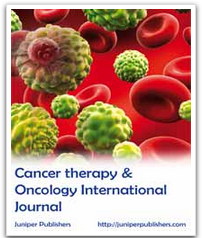Juniper Publishers - A Rare Case of Imatinib-Induced Pneumonitis

Cancer Therapy & Oncology International Journal Abstract Gastrointestinal stromal tumors (GISTs) are rare mesenchymal neoplasms that may affect any portion of the gastrointestinal tract. Surgical resection was previously considered the only treatment modality available, thus prognosis in patients with advanced disease was poor. The emergence of novel therapeutic agents such as imatinib mesylate has altered how physicians now approach and manage these unique malignancies. The addition of these targeted agents has resulted in a significant benefit in median overall survival. Imatinib treatment is generally well tolerated. Side effects such as oedema, rash and gastrointestinal upset may be observed. However respiratory complaints are exceedingly rare. We report a case of imatinib-induced interstitial pneumonitis after five months of treatment in a patient with intermediate risk gastrointestinal stromal tumor of the stomach. Keywords: Imatinib Mesylate; Glivec; Inter...




